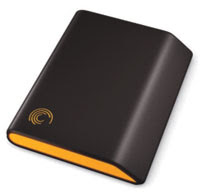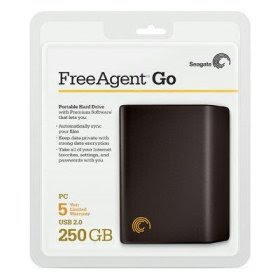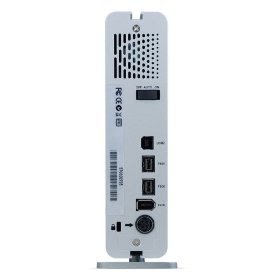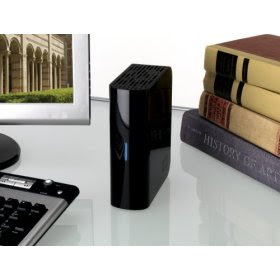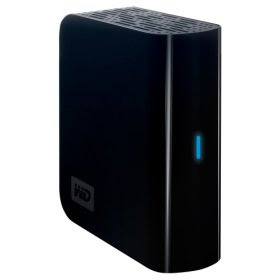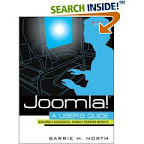Product Description
With the FreeAgent Go, you can turn any PC into your PC. The instructions make it easy to transfer a copy of your web browser, favorites, passwords, IM client and contacts, e-mail client, cookies, settings and files to the drive. With that done, simply plug the FreeAgent Go into any PC with a USB 2.0 port. The FreeAgent Go will transform that PC into a copy of your home PC. While in use, all of your actions are stored on the FreeAgent Go, so when you disconnect there is no trace of your personal data on the borrowed machine. The FreeAgent Go will even synchronize its data with your most frequented PCs, so its always up to date. The FreeAgent Go is a great way to not only take your data, but your entire desktop environment with you wherever you go. 5400 RPM USB 2.0 Connectivity PC Compatibility - Windows 2000, Windows XP Home, XP Pro, and Vista Mac Compatibility - Power PC G3, G4, or G5 processor running OS X 10.3.9 (or higher) or Intel Core Duo or Core Solo processor running OS X 10.4.6 (or higher) (FreeAgent Go software and drive formatting works only with Windows, but can be reformatted for Mac using Disk Utility) 5-Year Limited Manufacturer Warranty Unit Dimensions - 0.7 (h) x 4.8 (w) x 3.9 (d) Unit Weight - 6.4 oz.
If you find yourself working from multiple computers but needing constant access to your own software, e-mail and digital files, the Seagate Free Agent Go Portable Hard Drive is for you. More than a simple portable back-up and storage solution, the Seagate Free Agent Go lets you take your favorite software, Web browser, IM client and contacts, email, cookies, and personalization settings wherever you go--safely and securely. Not only does this portable hard drive synchronize your data with just about any computer you want to work from, more importantly it features the latest encryption software to protect your content, leaving no trace of your last session on the borrowed computer. With the Seagate Free Agent Go, you have the best of all worlds--a convenient portable back-up solution and a virtual desktop in a pocket-size package.
Product Features
- 250 GB portable hard drive connects to your computer via USB cable
- 5400 RPM spindle speed for speedy performance
- Protect against unauthorized use with encryption for sensitive files; Leave no trace of your last session on a borrowed computer
- Keep your most current data with you - synchronize data from your most frequented PCs
- Includes portable drive, Free Agent software (preloaded) and electronic documentation, USB 2.0 cable, and a quick start guide; 5-year limited warranty
- Capacity (GB): 250
- Interface: USB 2.0
- Spindle Speed (RPM): 5400
Take your favorite music, photos, or programs with you anywhere you go.
It’s all about having your desktop environment and latest files with you - when and where you need them. Designed for mobility, the sleek compact design easily fits into your shirt pocket, briefcase or backpack. We provide the USB cable that’s not only the interface connection, but the power source – no additional power cords are needed. And the unique espresso brown finish with molten amber illumination is just icing on the cake.
High-Speed Synchronization and Security
Whether you have vital company data or personal files and programs that you need to access, the Seagate Free Agent Go protects your most valuable information via drive-level encryption that provides a more robust solution than most software encryption on the market today. Delivering high-end protection against unauthorized use with encryption for sensitive files, this device keeps your data safe while you're on the go.
And not to worry, your Free Agent Go portable hard drive saves all of your private information on itself, not on the computer you’re using. That means there’s no trace of your last session to tempt the next person on a borrowed computer. It also provides strong file encryption to protect your content, and lets you sync your files from several PCs.
With the Seagate Free Agent Go, virtually any computer can temporarily become yours. The software/drive combination allows you to move files or other content quickly via USB 2.0, allowing transfer rate of up to 480 MB/sec for USB. The drive's high-performance spindle speed of 5400 RPM gives you the high-speed performance you need to back your data up quickly and safely. The sleek and slim design of this hard drive--only 0.7 x 3.9 x 4.8-inches (H x D x W)--and a weight of less than four pounds means that you can carry practically your entire desktop with you as you make your rounds from computer to computer.
The Free Agent Go software and drive is formatted to work out of the box with Windows operating systems--including Vista, Windows XP and Windows 2000--but the drive can easily be made Mac-ready in a few minutes with Mac OS X's Disk Utility. The unit features a sophisticated touch point power on/off switch. Plug in the USB 2.0 cable to a PC and your personal desktop environment launches automatically. To help eliminate even the slightest bit of worry, we’ve included technical support and a five-year limited warranty.

Read More...

